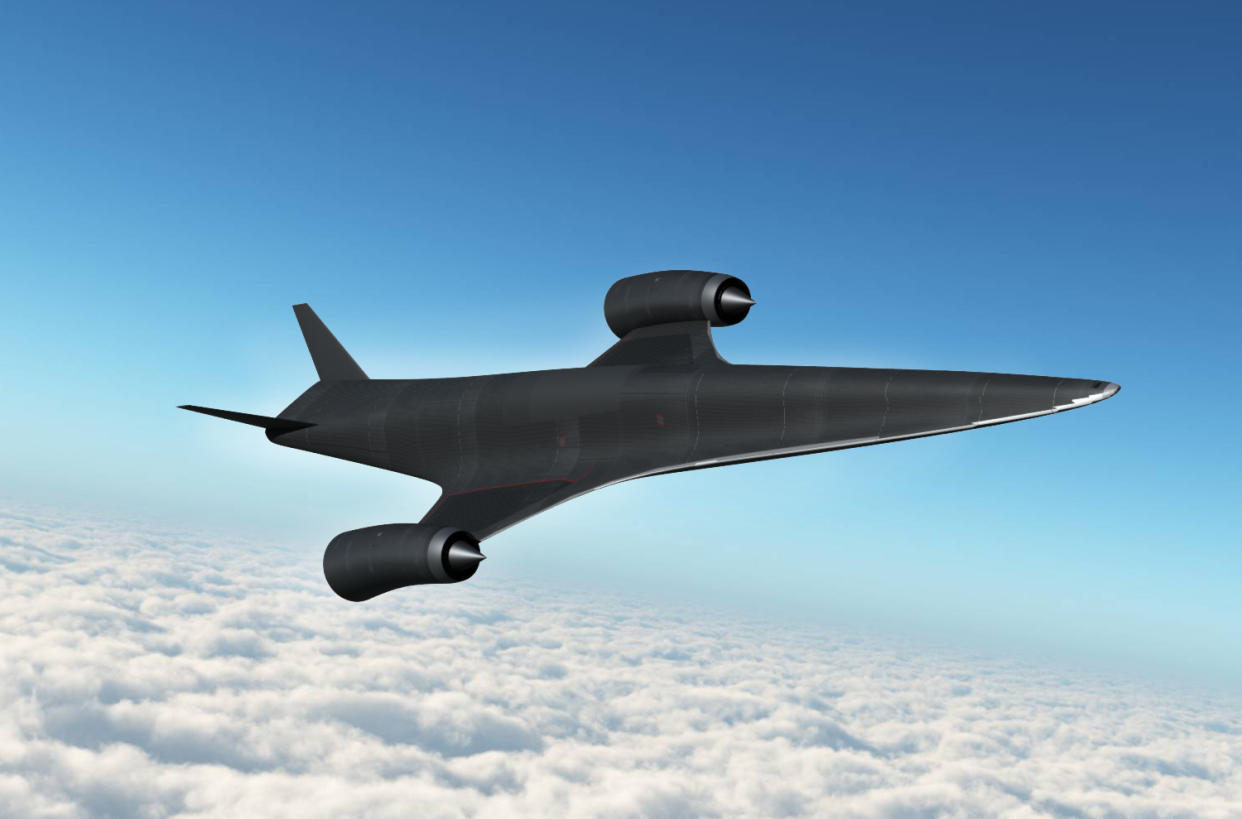Spaceplane which will take tourists into orbit at five times speed of sound could fly by 2025

A spaceplane which could blast tourists directly from a runway into orbit at five times the speed of sound could be in the air by 2025 after new investment.
The Skylon uses a revolutionary ‘air breathing’ engine which can blast passengers – or cargo – into space in just 15 minutes.
Instead of huge multi-stage rockets, a relatively light plane will take off from a conventional runway and reach space in a single journey without a pilot.
The engine could also make possible passenger flights from London to Australia in just over four hours – and drive airliners with twice the speed of Concorde.
MOST POPULAR TODAY ON YAHOO
Bargain hunter buys car for 100 mile trip to Bristol because it’s cheaper than the train
Instagram model films final moments before private plane crashes, killing six people
Three ‘coronal holes’ appear on the sun as solar storm buffets Earth
Car ploughs into pedestrian during vigil for cyclist killed in hit-and-run
The SABRE engine is made by a small UK company, REL, which has been perfecting the technology for 20 years – and whose founder believes that it could transform our world into ‘something out of science fiction’.
REL CEO Mark Thomas says, ‘Rolls Royce and Boeing – these are really big names, and it’s fantastic to be in this position.
‘Rolls are super-positive about the technology. They want us to be independent and innovative, and to push our technology as hard as possible.’
Before it blasts into space, the engine ‘breathes’ air, like a normal jet – but has to compress the oxygen to 140 atmospheres to burn it along with the hydrogen fuel it carries. At that point, it’s hot enough to melt ‘all known materials,’ Reaction Engines says.
The key is a pre-cooler heat-exchanger, which cools the air until it’s almost a liquid before it is burned, using a network of pipes. The machine weighs 1,250kg – and has already been successfully tested using a Viper jet engine in 2012, cooling the Viper’s exhaust to cryogenic temperatures.
It’s a breakthrough which allows the plane to ditch 150 tonnes in weight, when compared to the ‘disposable’ rockets previously used to put people into space – such as NASA’s Saturn V.
It could cut the costs of getting into orbit by 90%, its makers believe.
The Skylon uses atmospheric oxygen until it hits speeds of Mach 5, at 15 miles up.
At that point, it’s 20% of the distance to orbit – and the thinning air allows it to switch to ‘pure’ rocket mode, burning liquid oxygen fuel, at which it can hit the velocity required to escape Earth’s atmosphere, Mach 25, 16,250mph.

 Yahoo News
Yahoo News 

